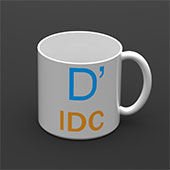Expanded Polystyrene (EPS) is a foam plastic material. EPS is made up of 98 percent air and due to its extreme low weightand shock absorbing properties it is used as packaging material for consumer goods. Its insulation properties make it an ideal packaging material for fish and other food stuffs.
Pre expansion – Tiny spherical polystyrene beads are expended to 40 times of their original size. The blowing agent used in the process is pentane (5 % by weight). In the process beads are heated using a flow of steam due to which blowing agent gets boiled and thus a honeycomb of closed cell are formed.
Drying – Pre expanded beads are dried in a drier using a flow of air.
Stabilization – After drying beads are moved to a stabilization tank where they are stored for about twelve hours to allow the pressure differential to equalize. The beads are now having stabilized granules.
Molding – The pre-expanded beads are again reheated with steam in the mold and during this final expansion beads coalesce to give a shaped molding
Polyurethane is a polymer manufactured by combining two different types of monomers isocyanates and polyols. Polyurethane can be in the form of liquid, foam or solid depending upon the proportions of the two monomers mixed together. Manufacturing of polyurethane part involves a chemical reaction. Isocyanates, polyols and additives are added together in specific quantities under specific conditions to produce a polyurethane product with properties required for that application.
Types and applications of polyurethane
- Low density flexible foam used in bedding and seating.
- Low density rigid foam used for thermal insulation
- Soft solid elastomers used for gel pads and print rollers
- Low density elastomers used in footware

